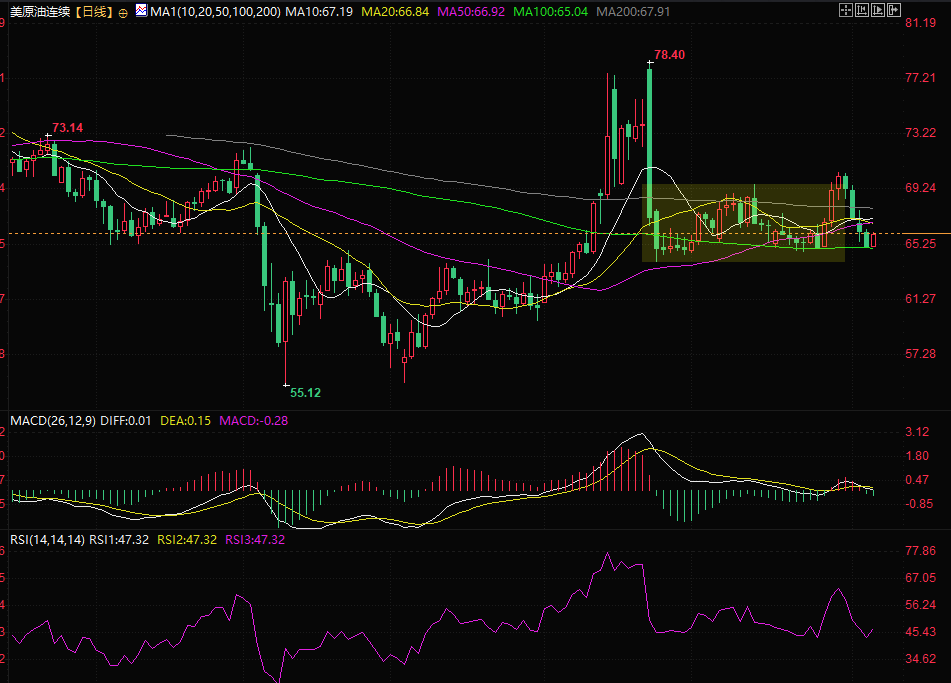Beware! With Trump's tariffs looming, US crude oil's rebound from a period of decline is a hidden danger, marking a critical window for oil prices.
2025-08-06 17:06:23
The Trump administration's tariff increase on Russian oil purchases is expected to take effect 10 days later, July 29th, or at the latest this week, on August 8th. The policy, originally intended to impose a 100% tariff on Russian oil purchases if Russian President Vladimir Putin fails to reach peace with Ukraine within 50 days, has been brought forward. Trump's special envoy, Steve Witkoff, will travel to Russia on Wednesday to negotiate.

This tariff mainly applies to imports from Asian importers. According to data from energy data company Vortexa, India's crude oil imports from Russia account for 36% of its market. At the same time, the two countries are also among the largest trading partners of the United States. Official US data show that the United States imported $526 billion worth of goods from these two countries last year.
During the 2022 Russia-Ukraine conflict, Asian importers increased their purchases of Russian crude oil after Western countries significantly reduced their imports of Russian fuel, causing its price to fall. Furthermore, when Trump first announced his tariff plan on July 15, U.S. crude oil futures briefly fell 2%, reflecting market doubts about the actual implementation of the policy.
The tariff policy itself: If strictly enforced, it may force Asian importers to reduce their imports of Russian oil and be forced to turn to high-priced crude oil from the Middle East, thereby causing a global crude oil supply gap of 1.5 million barrels per day, thereby pushing up global oil prices.
Asian importers' response strategies : They may circumvent sanctions through transshipment through third countries (such as India importing Rosneft through the UAE), thereby weakening the actual effect of US tariffs.
Russia's export adjustments: It may partially offset the supply gap by dumping crude oil at a discount of more than $20 per barrel to Southeast Asian and African countries (for example, Urals crude oil has been at a long-term discount of $20 to Brent crude oil).
Markets are questioning the sustainability of the policy: The US economy is highly dependent on goods imported from Asia. Imposing tariffs on Asian goods could raise prices for US consumer goods, such as iPhones. As Giovanni Stanovo, a commodities analyst at UBS Wealth Management, notes, "American consumers will be unhappy about this." This pressure could force the removal of tariffs due to domestic economic pain, exacerbating policy volatility.
There is a two-way pull on crude oil prices: concerns about supply gaps may push up oil prices; while factors such as Asian importers circumventing sanctions and Russia's discounted exports will suppress price increases, creating a game between bulls and bears.
The U.S. crude oil market is under indirect pressure: tariffs may increase the cost of mechanical and electrical equipment imported by the United States from Asia, thereby increasing the cost of shale oil extraction and weakening the United States' own ability to increase production. Clayton Segal, a senior researcher on energy and geopolitics at the Center for Strategic and International Studies, a bipartisan think tank in the United States, also pointed out that the expected tariffs "will lead to increased inflation in the United States" and make American companies face higher import costs.
Increased market volatility: Policy volatility (for example, after Trump announced the tariff plan on July 15, oil prices first rose and then fell, and ultimately fell back as investors expected that negotiations might be reached within the 50-day buffer period) makes oil prices highly sensitive to policy details (enforcement strength, exemption clauses), making it difficult to form a clear trend in the short term.
Summary: Oil prices will enter a critical window of opportunity by August 8th, requiring special attention. Crude oil prices will fluctuate amidst the conflict between the risk of a supply gap and doubts about policy effectiveness, potentially leading to a repeat of the "rise followed by a fall" pattern seen on July 15th. If Asian importers clearly reduce Russian oil imports or geopolitical risks spread, oil prices could experience a temporary rise. If channels for circumventing sanctions become unimpeded or the US softens its policies due to domestic pressure (e.g., Trump may remove punitive measures shortly after implementing them), the price volatility could shift downward.
In the medium and long term, we need to continue to pay attention to the game between the response measures of Asian importing countries and the economic resilience of the United States. Policy volatility remains the core variable that dominates the uncertainty of the crude oil market.

(US crude oil daily chart, source: Yihuitong)
At 17:00 Beijing time, the current price of US crude oil is: 66.13/15
- Risk Warning and Disclaimer
- The market involves risk, and trading may not be suitable for all investors. This article is for reference only and does not constitute personal investment advice, nor does it take into account certain users’ specific investment objectives, financial situation, or other needs. Any investment decisions made based on this information are at your own risk.





















